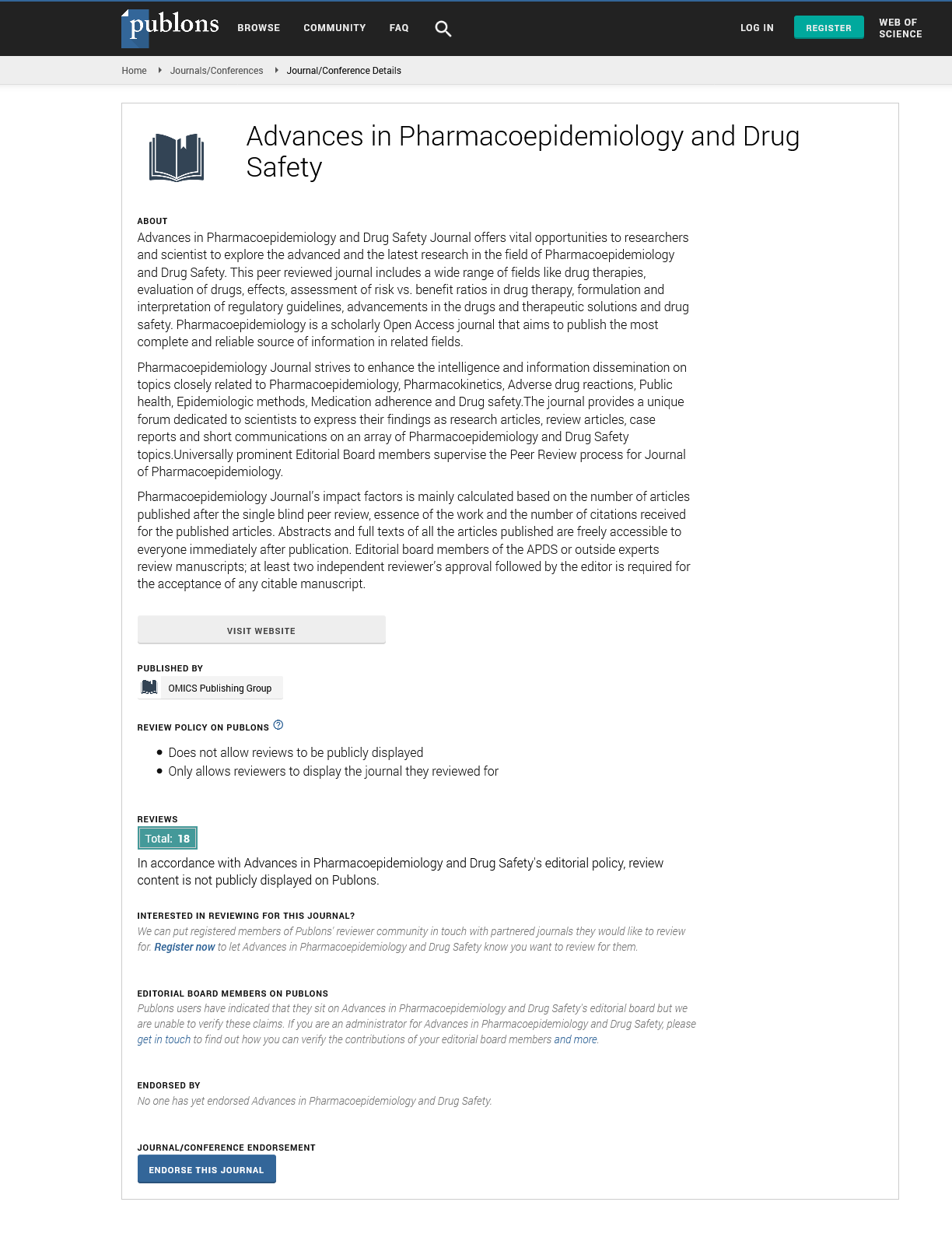Indexed In
- Open J Gate
- Genamics JournalSeek
- Academic Keys
- JournalTOCs
- RefSeek
- Hamdard University
- EBSCO A-Z
- SWB online catalog
- Publons
- Geneva Foundation for Medical Education and Research
- Euro Pub
- Google Scholar
Useful Links
Share This Page
Journal Flyer

Open Access Journals
- Agri and Aquaculture
- Biochemistry
- Bioinformatics & Systems Biology
- Business & Management
- Chemistry
- Clinical Sciences
- Engineering
- Food & Nutrition
- General Science
- Genetics & Molecular Biology
- Immunology & Microbiology
- Medical Sciences
- Neuroscience & Psychology
- Nursing & Health Care
- Pharmaceutical Sciences
Abstract
Evaluation of Antibiotic Use in Medical Ward of Fitche District Hospital, North Showa Zone, Oromia Region, Ethiopia
Addisu Alemayehu Gube, Rufael Gonfa and Tarekegn Tadesse
Background: Antibiotic are among the most prescribed drug in medical ward. Because of the rise in health care cost lack of uniformity in drug prescribing and the emergency of antibiotic resistance monitoring and control of antibiotic use are growing concern and strict antibiotic policies should be warranted. Inappropriate use of antibiotic can increase morbidity, mortality, patient cost and bacterial antibiotic resistance.
Objective: To evaluate antibiotic use practice in medical ward of Fitche hospital, North Showa Zone, Oromia region, Ethiopia.
Methodology: Institution based cross sectional study was conducted by collecting data retrospectively from 200 patient cards drawn by Simple random sampling using balloting from Medical ward of Fitche hospital from March 10- May 30, 2016. After checking for completeness and consistency, data was entered in SPSS (IBM 20) and descriptive statistics was carried.
Result: Out of the total 200 patient cards, 110 (55%) were of male and 90 (45%) were of female. Most antibiotics were prescribed for empirical treatment 163 (81.5%) and least for prophylactic treatment 5 (2.5%). In this study, of the total 340 drugs prescribed in Medical ward, the prevalence of antibiotics use was 220 (64.7%). In this study, 65% received more than one antibiotic. And the most commonly prescribed groups of antibiotic were Cephalosporin 32.5% and the most commonly prescribed antibiotic was ceftriaxone 27.5%.
Conclusion: This study revealed that of the total of 340 drugs prescribed for 200 patients in Medical Ward of Fitche District Hospital, 64.7% were antibiotics and the most commonly prescribed groups of antibiotic were Cephalosporin and the most commonly prescribed antibiotic was ceftriaxone. And majority of patients in Medical ward 65% received more than one antibiotic.

